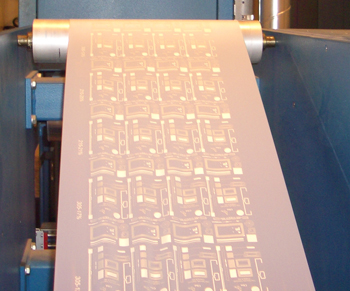If the electronics industry sometimes amazes you today with its breadth, capabilities and the smallness of its components - hold your breath for printed electronics, coming soon to a consumer retailer near you.
Printed electronics is a process by which a printing process you’d normally associated with printing on paper, and is used to print electronics such as semiconductors, solar cells and many others onto pretty much anything: clothing, product labels, thin film that can later be applied to buildings or cars and many other things.
And the market for it is about to get big…very big.
In the very near future, the critical components of printed electronics such as conductive inks and pastes, new transparent conductive films, and semiconductor inks will grow the market for printed electronics materials to $2.6 billion in 2017, according to a report by Lux Research.

Image via Printed Electronic News
“Much of the promise of printed electronics lies in the potential to manufacture devices through low-cost, high-throughput manufacturing," said Jonathan Melnick, Lux research analyst and an author of the report titled, Inking Money: The Prospects for Materials in Printed Electronics. "But, realizing this potential requires materials that offer good enough performance and are compatible with printing processes - without becoming too costly themselves.”
Lux Research analysts said they examined a range of materials, varying widely in complexity, performance, and cost - to assess their value proposition. They found that silver thrives while alternatives to it are seeing slow uptake.
The market for opaque conductive inks alone will grow to $2.4 billion in 2017, from $1.4 billion in 2012, with medical and RFID among the fastest-growing segments. However, silver paste will still dominate and other materials will only find traction in solar applications, said Lux. (Soon, you may be able to buy a thin film of printed solar cells that you can apply to the roof of your car, or the exterior of you house, to offset your traditional energy use.)
Part of the surge will also be driven by the explosion in smartphone and tablet sales and adoption. Transparent conductive films (TCF) that will replace indium tin oxide (ITO), which is widely used in touchscreens, will grow to $705 million, with $112 million coming from the inks.
Edited by Amanda Ciccatelli
